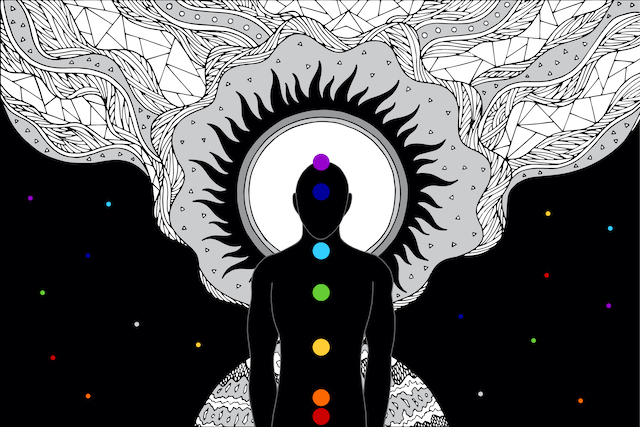
“The world breaks everyone and afterward many are strong in the broken places.” ~Hemingway
We all know of post-traumatic stress (PTS) but how many of us know of post-traumatic growth (PTG), a very hopeful and attainable way of life beyond the loss, adversity, and trauma we’ve experienced? It’s a term that was coined in the 1990s and is becoming more popular now as positive psychology and the specific area of resiliency-building have gained momentum in our society.
What is post-traumatic growth? It’s positive change and growth that comes about as a result of an adversity or loss. It is channeling our pain into something positive.
It’s more than simply returning to the life we had before the negative event; it involves psychological shifts and changes in ourselves, our beliefs and attitudes, our actions, the meaning and purpose in our lives, our relationships, to an even greater level of functioning.
This is not to say we don’t suffer and feel tremendous pain. In fact, we first need to allow ourselves to go through the painful and awful feelings that we’d prefer to squelch down. It’s similar to the grieving process where we have to go through it to come through it.
It is only later on, as the intensity of our negative feelings lessens and softens, that some small bits of sunlight begin to push through the looming clouds and we begin, very slowly, to move forward and integrate the challenge into our lives. We rebuild a new normal.
Without having a formal concept or name to put to it years ago, I went through my version of post-traumatic growth as an outcome of my daughter, Nava’s miracle: her survival and complete recovery from a near-fatal medical crisis.
She was on a respirator in a drug-induced coma for four months and then in a rehab hospital for nine months, relearning and eventually, miraculously, regaining every motor and body function.
Upon her return home from a year-long hospitalization and rehabilitation, I went back to work and resumed my life back home (as I had been living up at the rehab). Needless to say, I was thrilled to have witnessed this miracle—her survival and recovery—and I, as her mother, felt I had been given a second lease on life as well.
As time went on, however, I felt uncomfortable inside—empty, bored, and filled with angst, feeling like this just wasn’t enough. And then I’d feel guilty over feeling this way; after all, I had our miracle, what more could I possibly want???
Going back to life as before felt so small to me. I had just witnessed life at its most fragile, sitting by her bedside listening to every beep and bleep of machines that breathed for Nava and kept her alive, with tubes coming out of every opening in her body, on a bed that rotated in all directions.
One minute she had been eating a blueberry muffin waiting for a procedure and the next she was on a ventilator fighting for her life. If this didn’t make me realize how our lives hang by the thinnest of threads, then nothing would. And I began to feel my inner stirrings and angst more and more. This was slowly becoming clear to me:
I had just witnessed something miraculous. I had to do something to honor it. As people do things to honor a life that doesn’t survive, I felt a burning need to do something to honor the awesomeness of a life that did, against all odds.
It was clearly not enough to just resume, to pick up the pieces where I had left off. That would be like whitewashing away this most traumatic year in my life, not giving the miracle of life the respect and glory it warranted. Not to mention the miraculous complete recovery as she slowly began breathing and eating on her own after more than half a year with tubes and then a tracheostomy.
And so began the struggle of what to do. I also felt a strong sense of urgency to do and not waste time on this earth where we’re given an unknown and unpredictable amount of time.
In hindsight this was my angst to grow and push through. It was all percolating inside, and my frustration then became what to do…
I attempted many different things that I deemed meaningful: from clowning with Patch Adams to foster-raising a puppy for the disabled, to writing a book (which didn’t go anywhere at that point) and other smaller endeavors. I was in search of something big, though, the way some people start organizations and foundations out of their tragedy. But that didn’t happen.
But what did happen beyond these random experiences of adventurous do-gooding, as I see so clearly now, is that it was all happening on the inside. So, while I was in frantic and frustrated search for that external something, I was living {and continue to do so} more richly engaged than ever.
As I stated above, a sense of urgency to doing what I set my mind to now, rather than putting it off, became my M.O. When I saw a class in the city I was interested in, instead of waiting until the summer when I was off from my school job, I schlepped into the city once-a-week for the class during the school year. A friend of mine would say, “Whatever you say to Harriet, she’ll run with it, so be careful!”
Now in all fairness I was always a doer and proactive. But this part of me took on a whole new level as I became much more intentional. My interests in various things soared, and I began to feel like there’s just so much out there to learn and do; the world became my oyster.
Everything I was exploring had meaning to me, and what didn’t, I eventually threw by the wayside.
After a few more years at my school job, I left, deciding to do what I truly wanted to do in my professional life: work with people going through grief and loss (in all areas) in a clinical setting—my practice—and support them on their journey in coping and eventual growth.
As someone who was always interested and in awe of people who lived on well despite their hardships, I developed and curated my own project of finding and interviewing people to learn and put out there for others to see, the qualities and coping tools that led them to grow and thrive beyond their challenges. This eventually became my book.
And so post-traumatic growth was firing inside me. How can it work for you?
Drs. Tedeschi and Calhoun, of the University of North Carolina, who coined this term of PTG have identified five main areas where we can experience post-traumatic growth as an outcome of our adversities:
Relating to Others
Increased closeness to others, increased compassion and empathy to those going through difficulties, greater authenticity, and connection.
Connect with people on a deeper and more real level. Recognize where and with whom you feel more understood, connected, and supported. How are you responding to others in pain? Do you feel more sensitive to those suffering? Has your helping hand been extending more to those in need? Have your relationships taken on greater meaning in your life? Are you making more time for them?
Appreciation of Life
Awareness and gratitude for what we have, focus on beauty and goodness, living with more presence and intention; the absence of taking things for granted.
Begin to take pleasure in the ordinary things of life, for it’s the everyday beauty and pleasures that call, nourish, and fill us.
What are you noticing now that you rarely noticed before? What are you slowing down to really see? Are you being more mindful and reveling in the now? Awe is a positive emotion that fills us with wonder and boosts our well-being.
What beauty calls out to you? Is it the mountains that give us a perspective of smallness and humility in their grandness; or the expansiveness of the star-filled sky; or the ocean with its ups and downs of the waves in their calmness and subsequent crashing; or the rise and set of the sun that we can always count on for appearing and then disappearing?
New Possibilities
Re-evaluating what’s important and what truly matters/priorities; stepping outside one’s comfort zone and taking risks; openness to new ways of living, to new experience,s and learning/taking on new endeavors.
Take stock of your life and think about your top values and priorities. What now seems unimportant since your tragedy, trauma, or crisis?
After processing your grief and emotional pain, what new opportunities are you interested in exploring? How are you looking to expand yourself? What have you realized means more than anything? How can you better honor those things in your personal and/or professional life? How can you spend your time and energy in ways that reflect your values and what truly matters to you?
Personal Strength
Greater confidence and self-esteem, recognizing and appreciating one’s abilities and competence, self-pride, greater resilience, and coping abilities.
Reflect upon your strengths and allow yourself to feel good that you got through your difficulty in ways you thought you never could.
How did you cope with pain and hardship in healthy ways? What strengths did you use to help get you through the trauma/adversity? Recognizing those strengths, how can you continue to bring them forth in ways to enrich your life? There’s a very interesting free survey you can take here, that lists and puts your character strengths in order. What are your top five; how do they coincide with the way you see yourself?
Spiritual Change
Transcendence to things beyond ourselves, renewed purpose and meaning, questioning and searching as we reconfigure our newly designed tapestry.
Consider the existential questions of life on a more personal level. Instead of “what’s the meaning of life,” ask yourself, “What’s my purpose and meaning here, and how do I re-create that for myself? How do I connect to my meaning on a day-to-day basis?”
How are you redefining success and living well? How do you want to spend your days on earth? What mark/impact do you want to leave/have? How has your perspective broadened beyond yourself? Are you more connected to a purpose?
—
Once the bad circumstance(s) happen, growth can occur in the aftermath as we seek to create good, find new ways of living that can be enriching and meaningful, and develop and grow in any of the above areas.
Creating new goals and finding positive ways to adjust to a new reality is the hope and potential for post-traumatic growth.
Knowing this possibility for change and growth exists and that we’re not doomed to live out the misery of our challenges and losses can give us something to strive for. To some it comes more naturally, to others it’s something to work toward. Either way it points to a better way to live through and beyond our inevitable life challenges.
About Harriet Cabelly
Harriet Cabelly, LCSW is a therapist specializing in grief, loss. and critical life situations. She's also a speaker, author, and group leader. Harriet works from the lens of positive psychology and existentialism. She has a private practice seeing clients both in-person and virtually. She is passionate about helping people cope and grow through critical life-changing circumstances. Harriet is the author of Living Well Despite Adversity: Inspiration for Finding Renewed Meaning and Joy in Your Life. Visit her at rebuildlifenow.com.













 Though I run this site, it is not mine. It's ours. It's not about me. It's about us. Your stories and your wisdom are just as meaningful as mine.
Though I run this site, it is not mine. It's ours. It's not about me. It's about us. Your stories and your wisdom are just as meaningful as mine. 